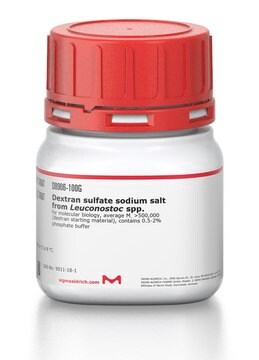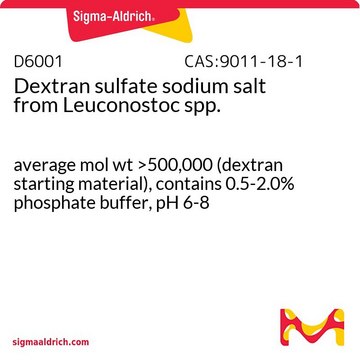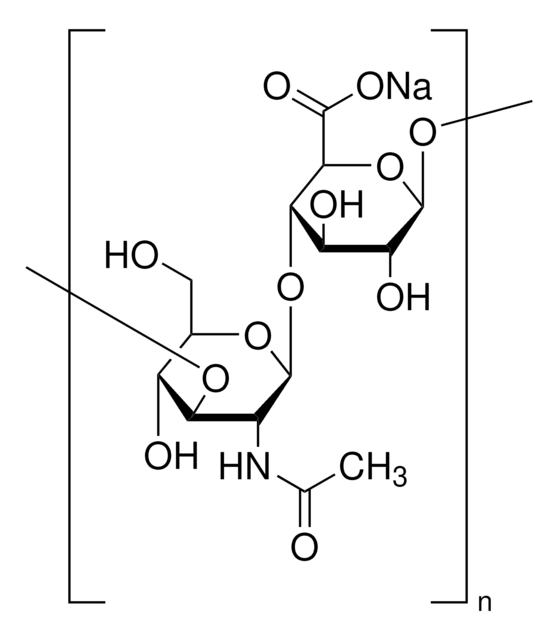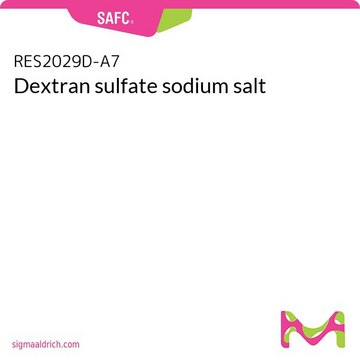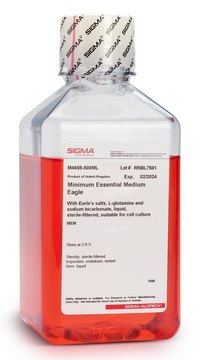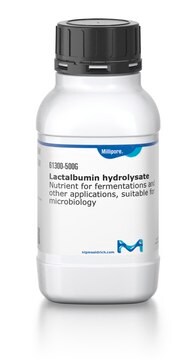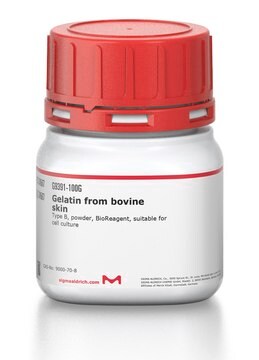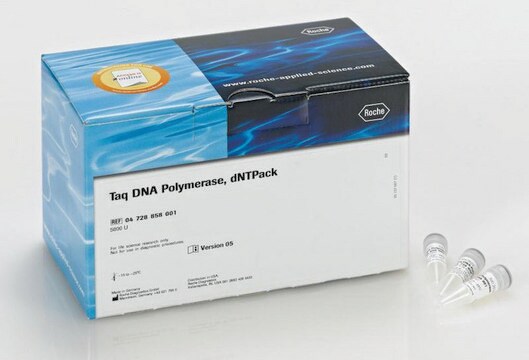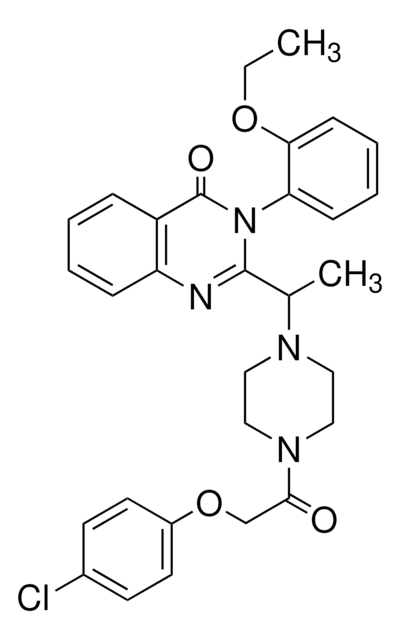Alle Fotos(1)
Wichtige Dokumente
G6148
Glasgow Minimum Essential Medium
With L-glutamine, without tryptose phosphate broth and sodium bicarbonate, powder, suitable for cell culture
Synonym(e):
GMEM
Anmeldenzur Ansicht organisationsspezifischer und vertraglich vereinbarter Preise
Alle Fotos(1)
About This Item
Empfohlene Produkte
Qualitätsniveau
Form
powder
Methode(n)
cell culture | mammalian: suitable
Komponenten
glucose: 4.5 g/L
phenol red: 0.0213 g/L
L-glutamine: 0.292 g/L
NaHCO3: no
Versandbedingung
ambient
Lagertemp.
2-8°C
Suchen Sie nach ähnlichen Produkten? Aufrufen Leitfaden zum Produktvergleich
Allgemeine Beschreibung
Glasgow Minimal Essential Medium eignet sich zum Untersuchen der genetischen Faktoren, welche die Zellkompetenz beeinflussen.
Anwendung
Glasgow Minimal Essential Medium wird wie folgt verwendet:
- in Toxin-Eindringungs-Assays
- für die 3H-Palmitat-Markierung
- zum Kultivieren von embryonalen Stammzellen
Menge
Formulierung enthält 12,5 Gramm Pulver je Liter Nährmedium.
Rekonstituierung
Ergänzung mit 2,75 g/l Natriumbicarbonat und Tryptose-Phosphat-Bouillonlösung (T 8159) in 100 ml/l Medium.
Ergänzung
Produkt-Nr.
Beschreibung
Preisangaben
auch häufig zusammen mit diesem Produkt gekauft
Produkt-Nr.
Beschreibung
Preisangaben
Signalwort
Danger
H-Sätze
P-Sätze
Gefahreneinstufungen
Eye Dam. 1
Lagerklassenschlüssel
11 - Combustible Solids
WGK
WGK 1
Flammpunkt (°F)
Not applicable
Flammpunkt (°C)
Not applicable
Persönliche Schutzausrüstung
dust mask type N95 (US), Eyeshields, Gloves
Hier finden Sie alle aktuellen Versionen:
Besitzen Sie dieses Produkt bereits?
In der Dokumentenbibliothek finden Sie die Dokumentation zu den Produkten, die Sie kürzlich erworben haben.
Kunden haben sich ebenfalls angesehen
Keiichi Ito et al.
Genes & development, 35(9-10), 729-748 (2021-04-24)
The MED1 subunit has been shown to mediate ligand-dependent binding of the Mediator coactivator complex to multiple nuclear receptors, including the adipogenic PPARγ, and to play an essential role in ectopic PPARγ-induced adipogenesis of mouse embryonic fibroblasts. However, the precise
Tatsushi Miyazaki et al.
PloS one, 8(8), e71645-e71645 (2013-08-14)
Tcl1 is highly expressed in embryonic stem (ES) cells, but its expression rapidly decreases following differentiation. To assess Tcl1's roles in ES cells, we generated Tcl1-deficient and -overexpressing mouse ES cell lines. We found that Tcl1 was neither essential nor
Naiara Clemente Tavares et al.
Frontiers in microbiology, 11, 963-963 (2020-07-01)
Schistosomiasis is a neglected tropical disease (NTD) caused by helminthes from the Schistosoma genus. This NTD can cause systemic symptoms induced by the deposition of parasite eggs in the host liver, promoting severe complications. Functional studies to increase knowledge about
Wander de Jesus Jeremias et al.
PloS one, 12(6), e0178829-e0178829 (2017-06-18)
Once inside a vertebrate host after infection, individual schistosomula of the parasite Schistosoma mansoni find a new and complex environment, which requires quick adjustments for survival, such as those that allow it to avoid the innate immune response of the
Edward C Hsiao et al.
PloS one, 3(7), e2532-e2532 (2008-07-04)
Fluorescent reporters are useful for assaying gene expression in living cells and for identifying and isolating pure cell populations from heterogeneous cultures, including embryonic stem (ES) cells. Multiple fluorophores and genetic selection markers exist; however, a system for creating reporter
Unser Team von Wissenschaftlern verfügt über Erfahrung in allen Forschungsbereichen einschließlich Life Science, Materialwissenschaften, chemischer Synthese, Chromatographie, Analytik und vielen mehr..
Setzen Sie sich mit dem technischen Dienst in Verbindung.

